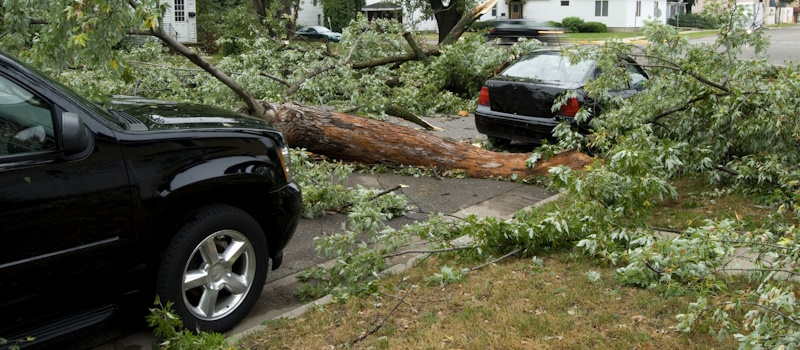Tornado Recovery: What's Protected for My Car?
Tornado Recovery: What's Protected for My Car?

Tornado Recovery: What's Protected for My Car?
It's estimated that about 1,200 tornadoes touch down in the United States each year. And with wind speeds of up to 300 miles per hour, any vehicles that stand in or around a twister's path are no match for it. The good news is that if your vehicle is damaged in severe weather, it is likely covered by your auto insurance policy. In this post, we'll take a closer look at what may be covered and the steps to take after the storm.
Is My Vehicle Covered?
As long as you have comprehensive vehicle coverage, the answer is probably "yes." Comprehensive coverage is essentially coverage for your vehicle that’s caused by anything other than collisions. So, while collision coverage addresses incidents where your vehicle comes into contact with another vehicle or object, comprehensive coverage takes care of virtually everything else. Such coverage often covers damages for natural disasters (like tornadoes), as well as fire, theft, vandalism, fallen objects, and striking animals, among others. If coverage is available, comprehensive coverage provides funds to either repair or replace your vehicle after you pay the deductible.
Steps to Take After Weather-Related Vehicle Damage
So, what should you do if your vehicle is damaged in a tornado? Here's a look:
Don't Attempt to Drive It
Chances are you'll have a pretty good idea of whether your vehicle sustained weather damage after the threat passes. But it could still be tempting to fire up the engine and take your car for a spin around the block to help determine how extensive the damage is. Try to avoid doing this for two main reasons.
- You could be putting your safety at risk, as the vehicle could be harboring some serious issues.
- You want to make sure that the vehicle is undisturbed until an insurance adjuster arrives and assesses it.
Driving the vehicle after a tornado simply has more risk than benefit, and you may want to avoid it.
Contact Your Insurance Agent
You'll want to contact your insurance agent as soon as you're able so you can start the claim filing process. After a natural disaster, you're likely not the only one filing an insurance claim on damaged property or vehicles, so the sooner an adjuster arrives at site for the assessment and the sooner your claim is filed, the more likely you can have your vehicle issues addressed quickly.
Assess and Document the Damage
While you wait for an adjuster to arrive, take photos and videos to document the damage to your vehicle. Also take note of anything that you can't see, such as any odd smells that could hint at less obvious issues. As we said in the above section, insurance companies are usually very busy with hundreds or even thousands of claims following a tornado. Anything you can do to help document the damage can be helpful in determining what coverage is available.
Check with FEMA
There's a chance that not all vehicle damage is covered following a natural disaster. However, FEMA and other government programs may help eligible drivers with further repair or replacement costs. Every situation is different, and drivers will need to meet certain criteria, but it can be worth investigating.
